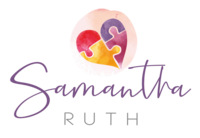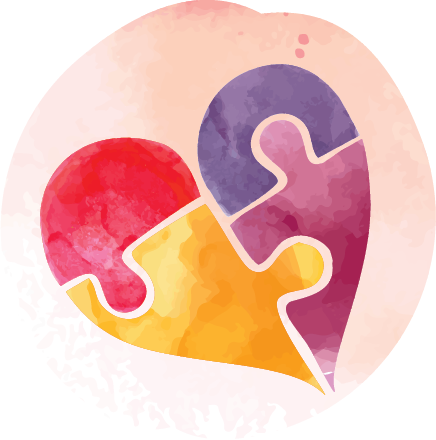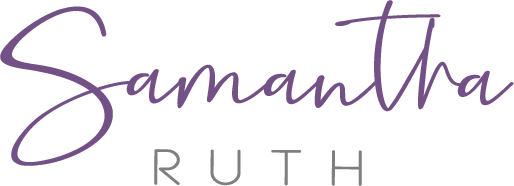Press











ABOUT Sam
SERVICES
Team Ruthless
EVENTS
GRIEFHAB™
PODCAST
RETREATS
shop
HEALING TOGETHER THROUGH THE HOLIDAYS - MAIN EVENT
HEALING TOGETHER - FOR A CAUSE: VIRTUALLY
HEALING TOGETHER - FOR A CAUSE: PILATES IN THE PARK - MICHIGAN
HEALING TOGETHER - FOR A CAUSE: VISIBLE - COLORADO
September 6-7
Jimtember Virtual Jubilee
blog
December 2nd - 8th / Metro Detroit AND VIRTUALLY
August 27th & 28th
August 30-31st
rUTHLESS IN THE ROCKIES
TEAM RUTHLESS
THE CONFIDENCE CONFERENCE
mOBILE rECOVERY dAY
Next event: September 10-23rd, Colorado
October 5-6th -
Virtual Event
September 30th, Castle Rock, Colorado
7 Groups Every week Plus Every Holiday
HEALING TOGETHER - FOR A CAUSE: Ride & ROAR - DALLAS
October 11 -12th
Stay Tuned!
FACES OF GRIEF
JOIN US
PTSD and Drug Use: Let’s Rethink Our Approach
June 27, 2023
June 26th was International Day Against Drug Abuse and Illicit Trafficking. Since the month of June is also PTSD Awareness Month, let’s talk about PTSD and drug use.
Post-Traumatic Stress Disorder (PTSD) is a life-altering diagnosis. You probably think of veterans when you hear the term. But PTSD is more common than you think, and its effects need to be taken seriously.
As the name suggests, PTSD is a stress disorder caused by trauma. Research suggests that about 1 in 3 people who experience serious trauma will develop PTSD. People with PTSD can experience a wide range of symptoms, including:
- Heightened Anxiety
- Insomnia
- Trouble Focusing
- Anger
- Irritability
- Sense of Hopelessness
- Detachment or Isolation from Loved Ones
- Avoidance (of feelings, difficult conversations, memories, and even just tasks that feel too difficult or overwhelming)
- Nightmares
Treatment for PTSD typically consists of some combination of therapy and prescription medications. While these treatment plans are not effective for everyone, some researchers have found that over 60% of clients treated report a significant reduction in their symptoms.
External Barriers to PTSD Treatment
But PTSD often goes undiagnosed. And even when it is diagnosed, many experience barriers to treatment.
Consider the time it takes to get to and from appointments and the impact that can have on work or family.
Consider the cost of high copays and out of network charges if insurance even covers treatment. And some don’t even want to use their insurance because of concerns that employers or educators will be notified.
These are barriers for people already getting help. But there are so many people who can’t even get that first appointment.
I can’t tell you how many people tell me that they called multiple people and places and few, if any, returned their calls.
Or there are wait lists with weeks, not days, weeks, to get an appointment.
WE MUST DO BETTER!
Then there’s basic client care – or lack thereof. I recently wrote about how some medical professionals lack a compassionate approach to client care, or even forget to treat their client like a person. For someone with PTSD, compassionate, empathetic care is absolutely necessary to successful treatment.
If a client feels like they are being treated as a number, an afterthought, or even a nuisance, they are very likely to give up on seeking care.
Wouldn’t you?
And what if you’re seeking care for more than one issue? Cooccuring diagnoses are even more nuanced, and finding a specialist can be difficult in any area.
It’s extremely common for people in these situations to give up because it’s too difficult to find the care they need.
Again – we need to do better. It’s our job. The responsibility is on US not on the individuals who are already struggling.
Internal Barriers to PTSD Treatment
In addition to all of these external barriers to access, there are also internal barriers preventing people with PTSD from accessing treatment. One of the greatest barriers to care is stigma. If a person feels that a PTSD diagnosis shows ‘weakness,’ they’re unlikely to seek help. And if they come from a community that shames the use of prescription medications or therapy, they will avoid those treatments.
Between all of these barriers to treatment, many with PTSD–whether diagnosed or not–seek out ways to manage their symptoms on their own. One study found that patients seeking treatment for PTSD were 14 times more likely to also have a substance use disorder.
This is a severe failure in our medical system. Vulnerable people who have already experienced serious trauma should not be left to self-medicate or figure it out on their own.
So what can we do to support people with PTSD and fight the rate of addiction?
How Can We Support People with PTSD and Lower the Risk of Drug Use?
This year’s theme for International Day Against Drug Abuse and Illicit Trafficking is People First: stop stigma and discrimination, strengthen prevention. And that’s a great place to start.
The stigmas around both PTSD and drug use only add to the barriers preventing people from seeking the help that they need. When we treat someone’s self-medication as a moral failing, they won’t feel safe to tell us that they need help.
And it’s the same with PTSD; the symptoms often manifest in ways that aren’t socially acceptable. Outbursts, depressive episodes that lead to lost jobs, and avoidance of tasks like basic hygiene or housekeeping are all normal symptoms of PTSD, but they quickly create shame and lead to isolation.
A Compassionate Approach
Ultimately, the best thing that you can do is approach PTSD and drug use with compassion. Get to know the signs of both. Familiarize yourself with local resources so that you can refer people to the right place when the time comes. Learn about ‘people-focused’ approaches to drug policy and treatment. Learn about the common causes of PTSD and other traumas.
If you can, consider volunteering with an organization that helps people struggling with PTSD or addiction. Help bridge the gap so that there are fewer barriers to access for those seeking treatment. Maybe they need someone to offer rides for patients who don’t have a vehicle or can’t drive. Maybe they need a music teacher or artist to donate time toward providing alternative outlets for patients to explore their feelings. Or maybe they need someone with great organizational skills to help plan a fundraising event so that they can afford to meet other accessibility needs for their clients.
Most importantly, start conversations with your loved ones about trauma and addiction. The more that we normalize these topics in our everyday lives, the less stigma and shame people will feel if they are struggling.
If you need professional support, you can email me, text, or book a call. I am always here to help!
Looking for community support? Join the Griefhab Community for support, resources, and more!
Leave a Reply Cancel reply
120 E. Front St. Loft 2 Traverse City MI 49684 &
77 Monroe Center St Ste 600 Grand Rapids MI 49503
phone : +1 (231)707-0707


Donate TO GRIEFHAB™
Donate today to help make our events and services free for everyone.
You can also donate directly to support a specific client in need.
four
three
info & Investment
two
THE FOUNDER
one
fIVE
GRAB A COPY OF MY
BOOKS & MERCHANDISE
four
three
info & Investment
two
THE FOUNDER
one


fIVE
GRAB A COPY OF MY
BOOKS & MERCHANDISE










HEALING TOGETHER EVENT
EVENTS
four
three
info & Investment
two
THE FOUNDER
one
fIVE
GRAB A COPY OF MY
BOOKS & MERCHANDISE
four
three
info & Investment
two
THE FOUNDER
one





fIVE
GRAB A COPY OF MY
BOOKS & MERCHANDISE










FACEBOOK FAMILY
GRIEFHAB™ SERVICES
FACES OF GRIEF
Our Press Features
THE BE RUTHLESS SHOW
two
three
Recent Articles
one





Coming in September! Stay Tuned.
December 2nd -8th / Metro Detroit AND VIRTUALLY
August 25th
August 30-31st
October 11 -12th
Stay Tuned!










four
three
info & Investment
two
THE FOUNDER
one





fIVE
GRAB A COPY OF MY
BOOKS & MERCHANDISE
four
three
info & Investment
two
THE FOUNDER
one





fIVE
GRAB A COPY OF MY
BOOKS & MERCHANDISE









